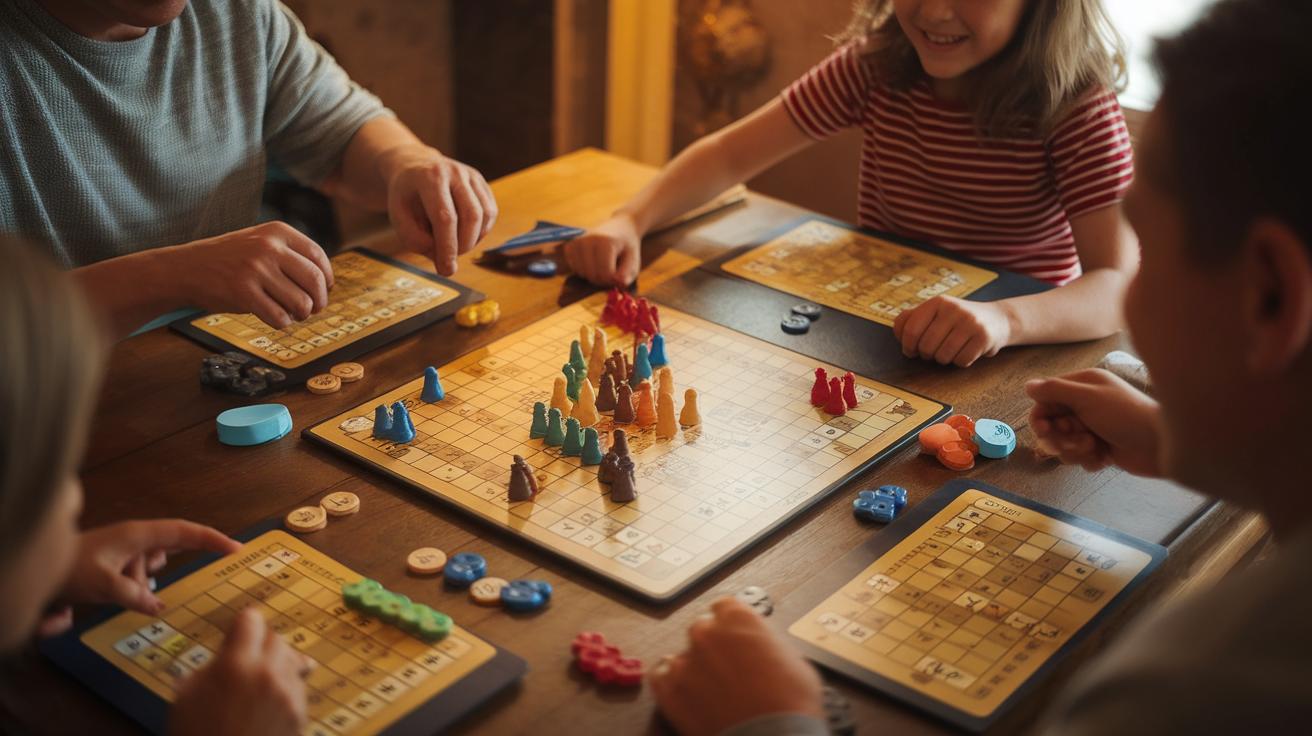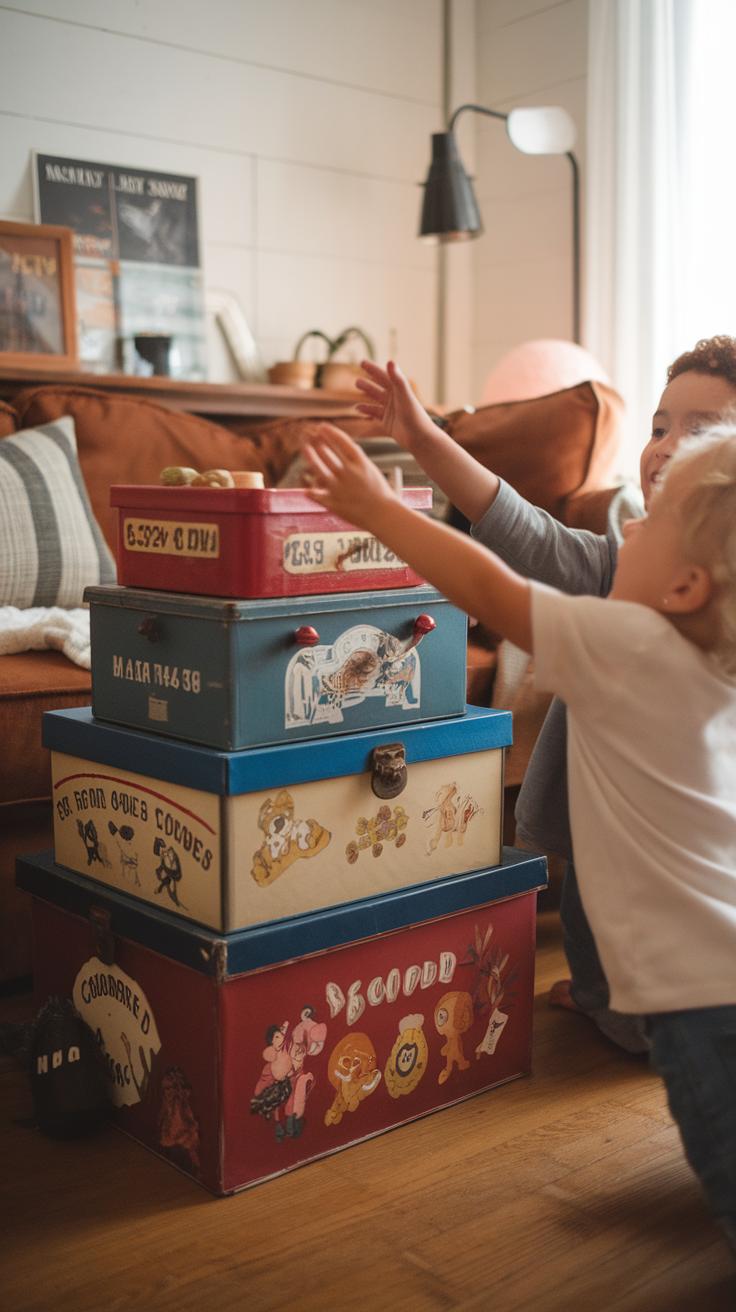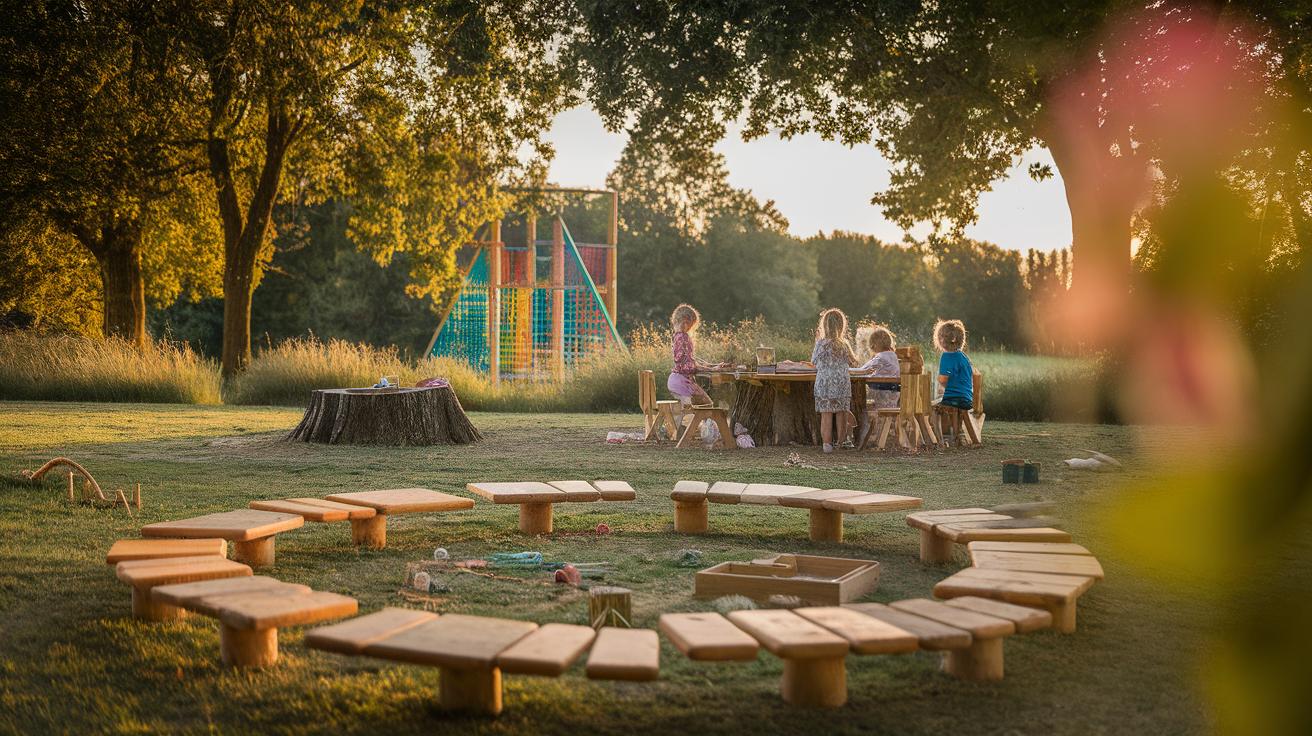Introduction
Family fun games offer a simple way to create joyful memories and strengthen bonds during your time together. When everyone from kids to grandparents gets involved, these games provide more than just entertainment. They encourage communication, teamwork, and laughs. This guide focuses on classic family games that have stood the test of time. Each game can be adapted to fit your family’s unique interests and age ranges.
Choosing the right games makes any gathering unforgettable and helps everyone feel included. These favorites do not require complicated setups or special equipment but bring excitement and interaction that screens cannot match. Whether your family reunion, birthday party, or casual weekend call for group fun, these activities help make shared moments meaningful. You will discover how to pick and play games that keep energy high and smiles wide.
Why Choose Family Fun Games
You might wonder what makes family fun games stand out from other activities. Playing games with your family helps build strong bonds by encouraging everyone to spend focused time together. It builds a space where family members listen and respond to each other, improving communication in ways screens cannot.
The chance to talk, laugh, and sometimes even persuade one another during a game brings out connections that get lost when everyone uses different devices.
Family games also invite teamwork, teaching everyone to support and trust each other. Unlike digital entertainment that often isolates players, these games pull your family into shared moments. You create stories that you can talk about later, strengthening your relationships naturally.
Consider how you feel after a night of screens versus the warmth of a game played around the kitchen table. Which memory feels stronger? How would your family life improve if you played games more often?
How Games Strengthen Family Bonds
When your family plays games, you practice talking and listening closely to each other. This exchange helps young and old understand viewpoints and express ideas clearly. Games require cooperation, so players learn how to work together toward a goal.
A simple game like charades can teach kids to read nonverbal clues while encouraging adults to be patient and supportive. As your family helps each other solve puzzles or win challenges, you strengthen trust and teamwork skills.
Playing with different ages fosters respect across generations. Younger players gain confidence, while older ones stay engaged and involved. How often do your family moments challenge you to listen carefully and support one another? Games offer that chance.
Memories That Last Beyond the Game
Games create experiences that stay with your family long after the final turn. These shared moments form unique stories that every member can recall and cherish. You build a family history filled with laughter and friendly competition.
Imagine the excitement of a surprise move that suddenly changes a game’s outcome or the inside jokes that develop around certain playing styles. These memories connect you in ways that no screen or app can offer.
Every game night opens new chances to create traditions and meaningful moments. When was the last time your family talked about something you all enjoyed doing together? What stories will you create next time you gather around the game board?
Selecting Games for Different Ages and Interests
Choosing the right game means thinking about who will play. Younger children often enjoy simple rules and quick turns, while teenagers and adults might prefer more strategy or competition. Try games that can be adjusted, like charades, where younger players can act out easy clues, and older ones can take on tougher challenges.
Consider your family’s interests. If some like storytelling, pick games that involve creativity. If others enjoy puzzles, choose word or number games. You can also split into teams to mix abilities and keep everyone engaged.
Modifying games helps keep all players involved. For example, when playing card games, let younger kids use fewer cards or allow older players to give hints. Have you thought about which game could be your next family favorite if you adapt it?
Balancing Skill Levels and Fun
Keeping a game fun for all ages means balancing challenge with simplicity. Give younger players some advantages like extra turns or hints. For adults, add layers like time limits or bonus points.
Adjust the rules to fit your players. If a game feels too hard for kids, simplify scoring. If adults need more competition, create new goals or side challenges. Switching teams often can also keep games fresh and fair for everyone.
How do you make sure everyone stays interested when skill levels vary? Try mixing teamwork with individual play. Games that reward cooperation help balance skill differences while keeping the fun alive.
Involving Everyone in the Fun
Family games should include every member, no matter their physical or cognitive abilities. Choose games that do not rely only on speed or complex moves. For example, picture bingo or story-based games can be enjoyed by all.
Modify movement-based games by allowing players to use gestures instead of running or jumping. When memory or thinking games seem hard, team members can help by sharing ideas or clues.
Ask yourself how you can change a game so everyone is part of the action. Simple rule changes and open communication create space for fun, ensuring no one feels left out during family gatherings.
Classic Indoor Board and Card Games
Monopoly has brought families together for generations. To set it up, lay out the board, choose tokens, and give each player a set amount of money. Players buy properties, build houses or hotels, and try to bankrupt their opponents. The mix of strategy and luck keeps everyone engaged, and it often leads to lively conversations and friendly rivalries. Have you ever noticed how Monopoly teaches negotiating skills and money management?
Scrabble offers a quieter, word-focused challenge. Each player draws seven letter tiles and uses them to form words on the board. Scoring depends on letter values and premium squares. This game pushes vocabulary skills and encourages creativity. It invites players to think carefully and discover hidden words, making it both educational and fun.
Uno is a fast-paced card game that works well for all ages. Players match colors or numbers to play cards and aim to be the first to discard all cards. Special action cards add twists and turn the game into a lively competition. Uno’s simple rules and quick rounds make it perfect for casual gatherings.
Timeless Board Game Favorites
Games like Candy Land, Clue, and The Game of Life continue to appeal to families because they mix easy rules with engaging stories. Candy Land’s colorful board attracts younger players who want a simple race to the finish. Clue asks players to solve a mystery by gathering clues, encouraging deductive thinking. The Game of Life models life experiences like careers and events, sparking conversations about choices and goals. These games draw players in by blending fun with meaningful interactions.
Simple and Fast Card Games
Go Fish is a straightforward game perfect for younger kids. Players ask each other for cards to make pairs, focusing on memory and matching. Crazy Eights challenges players to discard cards by matching suit or number, with special cards that change the game flow. War is simple yet competitive; players flip cards, and the higher card wins. These games require minimal setup and rules, so everyone can jump right in. What makes your family smile during a quick card match?
Outdoor Games to Energize Your Gathering
Outdoor games like sack races, hide and seek, and Frisbee bring energy and smiles to family gatherings. Sack races require little equipment—just a few sacks or pillowcases—and get everyone hopping toward the finish line, from kids to grandparents. Hide and seek encourages players to explore the yard or park, making it fun and physically active for all ages. Frisbee adds an element of teamwork and friendly challenge while keeping the group constantly moving. These games don’t demand complex rules or long setup times, making them perfect for spontaneous play. Have you noticed how a quick game outside changes the mood and sparks laughter? Including these games helps break the ice and connects family members through shared movement and play.
Active Games for All Ages
Choose games that work for everyone, no matter their age or skill. Simple activities like relay races, tag variations, or balloon toss keep everyone engaged without feeling too tough or too easy. Relay races can use household items like spoons or balls, turning the backyard into a friendly competition zone. Tag encourages fast movement and quick thinking, keeping kids and adults on their toes. Balloon toss invites careful coordination and laughter, providing a gentle challenge. All these games promote physical activity while ensuring no one feels left out. Consider your family’s strengths and limitations when picking games to encourage fun and movement for all players.
Planning for Weather and Space
Adjust your game choices based on space and weather. On sunny days with plenty of room, opt for games requiring wide-open areas, such as Frisbee or sack races. If the space is smaller, select games like hide and seek or balloon toss that need less running. When rain threatens, have a backup plan for covered areas or switch to short activities requiring minimal space. You might even organize a quick indoor version of an outdoor game to keep spirits high. Think about the surface too: grass works well for running, while hard ground suits precise throws. Preparing for these details ensures your family stays active and entertained, whatever the weather or setting.
Games That Encourage Teamwork
Games that focus on teamwork help family members work together instead of competing against each other. These games ask everyone to combine their skills and ideas to reach a shared goal. You can feel the sense of achievement that comes when everyone helps solve problems or overcome challenges as a group.
Think about a game like “Escape Room in a Box,” where the family solves puzzles using clues and cooperation. Another example is “Pandemic,” a board game requiring players to stop the spread of diseases by planning moves together. These games create moments where listening to others and sharing ideas become essential.
When was the last time your family solved a challenge as a team? How did it change how you work together at home? Playing games that emphasize teamwork supports communication and helps every player feel valued.
Cooperative Game Options
Cooperative board games and group activities make everyone work toward the same goal. Games like “Forbidden Island” and “Mysterium” ask players to combine their strengths. You make decisions together, and no single player wins without the whole group.
Group games such as “Human Knot” or “Trust Fall” require physical cooperation and trust. These help build stronger bonds because you rely directly on others. Choose games that match your family’s age and interest. This way everyone can join in easily and contribute.
Have you tried working as a team in a game where only combined efforts lead to success? Look for games that remove rivalry and bring everyone closer by encouraging cooperation.
Benefits of Playing Together
Playing cooperative games improves how family members understand and support each other. Sharing challenges helps build empathy. You notice others’ strengths and weaknesses more clearly. This shared experience often leads to better communication beyond game time.
Studies show families who play together regularly report stronger connections and less conflict. You learn to respect different ideas and celebrate joint successes. These games also teach patience when things go wrong.
How often does your family spend time playing games where everyone wins by helping each other? Try cooperative play to create memories that last and improve relationships at the same time.
Incorporating Technology Without Losing the Classic Feel
Technology can add convenience to family fun games without changing what makes them special. Using simple scorekeeping apps on a tablet or phone helps keep track of points quickly. This saves time and avoids arguments over numbers. You can also use interactive features like timers or sound effects to keep everyone energized during a game.
Choose tech tools that support the flow rather than take over the game. Avoid devices that pull attention away from the players. For example, a digital spinner or dice roller can replace physical ones but keeps the game moving smoothly. Ask yourself: Does this tech help us play more or distract us?
Blending Old and New Game Styles
Combine traditional game pieces with technology to enrich the experience. Use apps that explain rules so everyone catches on faster. Share photos of memorable rounds on family group chats after the game ends. This keeps hands-on interaction front and center, while tech fills in gaps.
For example, use a tablet to keep score while everyone focuses on rolling dice or drawing cards. Technology acts like a helpful referee, not a player. This way, you keep the tactile fun of classic games, but add modern convenience and fairness.
Keeping Focus on Family Interaction
Set limits on screen use so phones or tablets only pop up when needed. Turn off notifications during game time to reduce distractions. Encourage everyone to look at each other and talk during play. Use technology for tasks like timekeeping or judging, but not for constant entertainment.
Try setting phone baskets where players drop devices before starting a round. Then pull them out just for agreed tech steps like scoring. How can you keep family eyes and voices on each other, not screens? This balance helps your games bring you closer, not pull you apart.
Game Night Ideas for Special Occasions
Choosing a theme for your game night adds excitement to celebrations like birthdays, holidays, or family reunions. For a birthday, try a “Retro Game Night” with classic board games like Monopoly or Sorry. Decorate with balloons and streamers matching the birthday person’s favorite colors. During the holidays, select seasonal games such as Christmas charades or holiday-themed trivia. Use festive decorations like twinkling lights and a cozy fireplace setting if possible. Family reunions call for team-based games that encourage interaction, like Pictionary or relay races adapted for indoor play. Hang banners with the family name or year to mark the occasion. How could you link your game choices to the reason for the gathering? These small details help make your game night feel special and meaningful.
Creating a Festive Game Atmosphere
Begin by clearing enough space so everyone can move freely and see the game clearly. Comfortable seating is key—chairs, cushions, or even a floor blanket circle works well. Use lighting to set the mood: soft lamps or fairy lights can make the room feel cozy and inviting. Background music at a low volume adds to the fun without overwhelming conversation. A snack station nearby keeps energy up without distracting from gameplay. Think about adding simple themed decorations, like tablecloths or centerpieces, that match your game night concept. How can you use your environment to create focus and joy for players of all ages?
Choosing Games for Celebrations
Select games that fit the size and age range of your guests. For mixed ages, classics like Uno, Jenga, or Bingo keep everyone involved and entertained. Large groups can enjoy team games like Charades or Scavenger Hunts, which encourage interaction and laughter. Smaller parties benefit from games like card games or simple board games with fewer players, such as Connect Four or checkers. If children and adults play together, cooperative games like “Outfoxed!” or “Sleeping Queens” work well. Ask yourself what games your family enjoys most and how you can keep everyone engaged until the end. That way, your celebration stays lively and memorable.
Troubleshooting Common Family Game Night Challenges
Handling Rule Disputes Calmly
Disagreements over game rules can quickly cause tension during family game nights. When this happens, pause the game and ask everyone to read the rules together. Sometimes, different versions or house rules cause confusion. Agree on the rules before you start playing next time.
If a dispute continues, suggest a neutral family member or the youngest player decide. This keeps things fair and avoids arguments. You could also look up official rules online to settle debates. Remember, the goal is to keep the fun alive, not to win at all costs. How do you usually resolve rule disagreements when they arise?
Keeping Everyone Engaged
Not all family members have the same skill or interest in every game. This can lead to boredom or frustration. Try changing the rules to give weaker players small advantages or rotate team members to balance skill levels.
If someone loses focus, switch to a quicker, simpler game or let them take a break. Allow players to watch quietly, so they still feel included without pressure. Consider games with different ways to participate, such as drawing, guessing, or acting. What are some games your family enjoys that involve everyone, regardless of skill?
Building Your Own Family Game Traditions
Encouraging your family to create unique game traditions can strengthen bonds and build memories that last. When you invent your own rules or games, you shape moments that feel personal and meaningful. Think about adding family inside jokes or favorite themes to a classic game, turning it into something special only your family plays.
You might try starting a tradition where every holiday dinner includes a specially created game. Ask each family member to contribute one new rule or challenge. Over time, these small changes will form a legacy all your own. What story will your game tell about your family’s values and experiences?
Making Games Meaningful
You can make games more meaningful by weaving in your family’s history and values. For example, modify Monopoly so that each property represents a place important to your family, like where grandparents grew up or favorite vacation spots. You might add a rule that rewards teamwork or kindness, reflecting how your family supports one another.
Try giving players roles tied to ancestors or family traits. This adds depth and helps everyone feel connected. How could your family’s stories come alive through a game?
Inviting Creativity and Fun
Involve everyone when you create or change games. Encourage children to suggest new challenges or twists. Ask grandparents to share ideas inspired by games they played when they were young. Let teens write or draw game cards that match their interests.
This creates ownership and excitement because everyone contributes. Try holding a game workshop night where the whole family brainstorms together. How could shared creativity turn your next game night into a highlight everyone looks forward to?
Conclusions
Classic family fun games have lasting value because they pull everyone together, turning ordinary gatherings into cherished occasions. Your participation and enthusiasm influence the experience as much as the game choice itself. Remember, it is the shared moments and friendly competition that matter most. Try mixing games with different pacing and skills to keep all players engaged and challenged.
Use these games as a starting point to create your own family traditions. The right games lighten the mood, invite storytelling, and help family members reconnect across generations. What games will you bring out at your next event? Focus on simple fun and connection. That energy will make your family’s time together truly unforgettable.

























